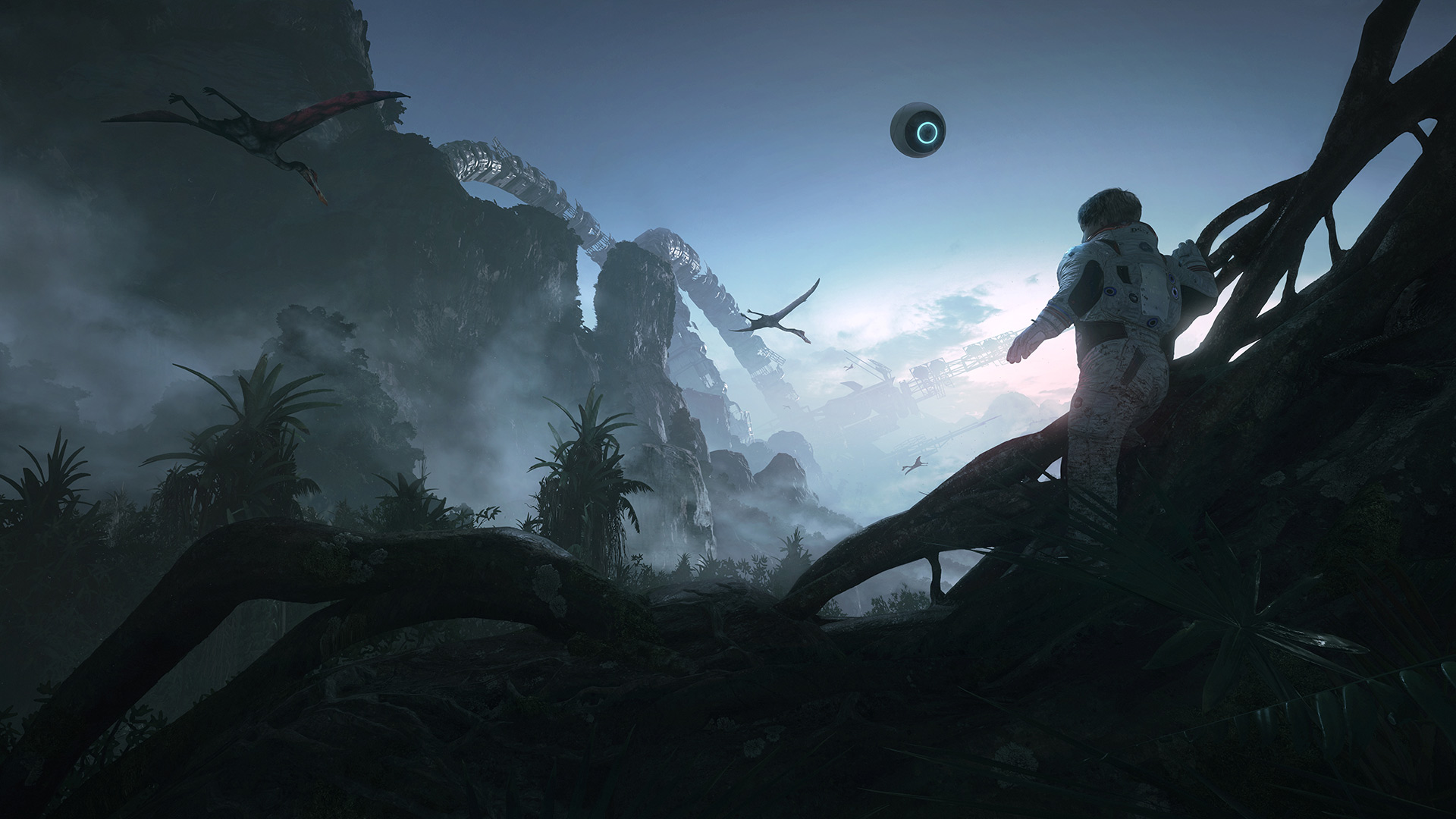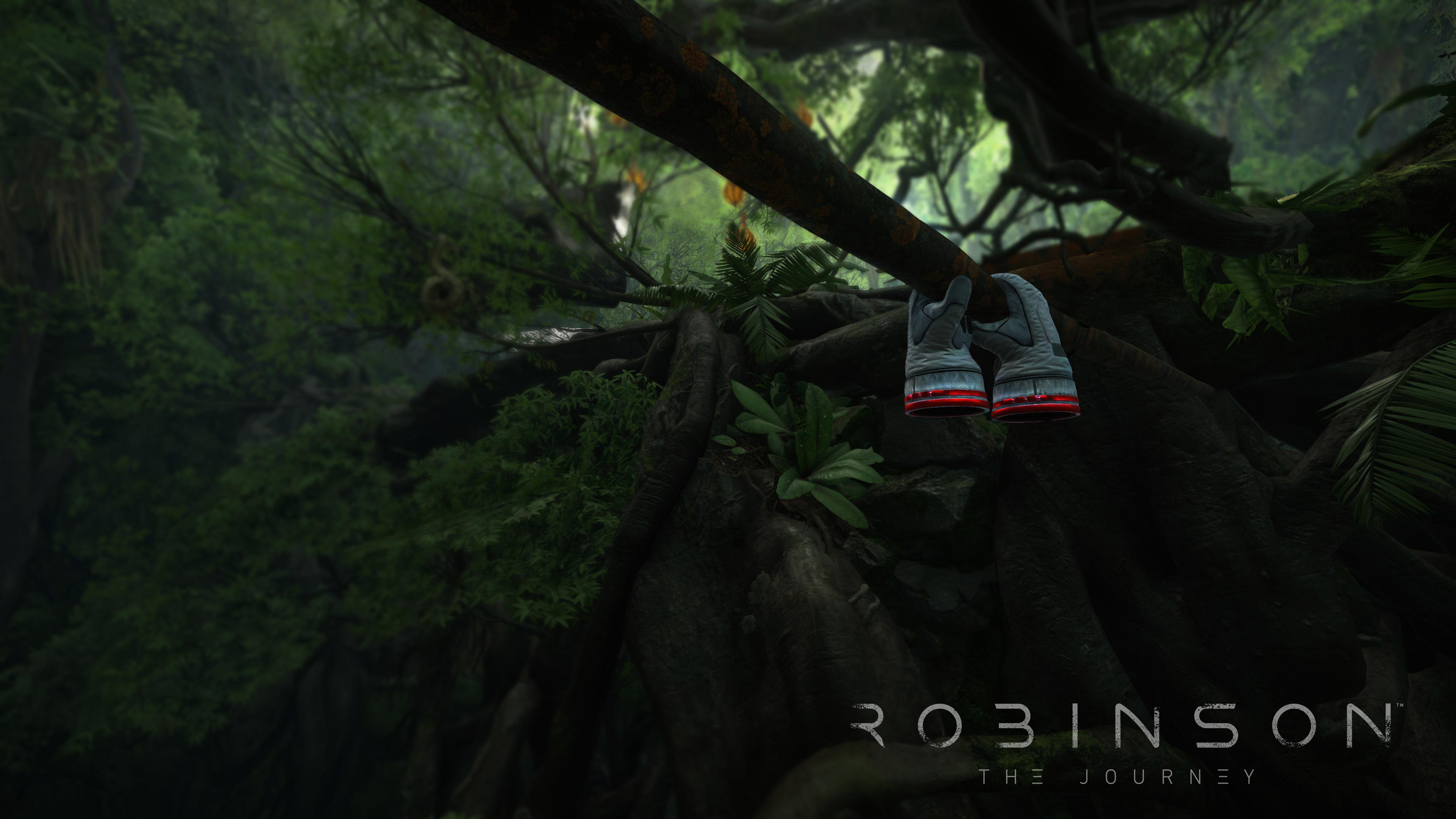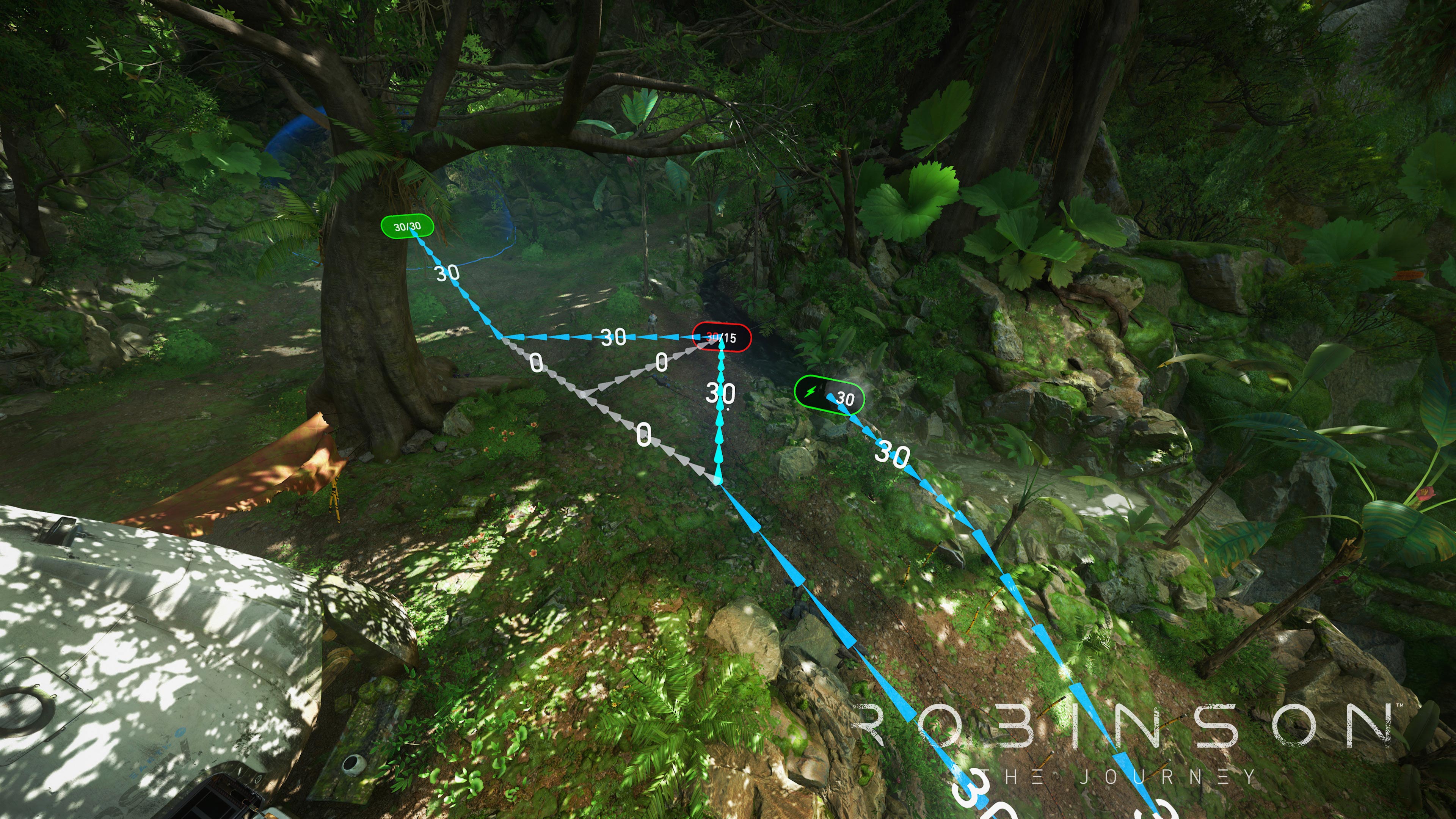
November 07, 2016
By the Game Design and Programming Team (Contributors: Niklas Walenski, Game Designer and Niels Stoelinga, Gameplay Programmer)

Try everything. Keep only the very best ideas. Make the game
you've always wanted to play.
That, in a nutshell, has been the development philosophy behind Robinson: The Journey. Rather than use every VR feature just because ooh, shiny new tech!, the team carefully prototyped and considered each element of gameplay and locomotion and kept only the most intuitive, natural, and fun.
It's a trap you can easily fall into with a new medium where you feel like you have to use all the new features just because they're there, even though sometimes they aren't the ideal choice. So that is something we've been aware of, and we always try to push back against. If it feels good, we use it, and if it feels wrong, we try something else. We wanted Robinson to be more than a tech demo for a new medium. Locomotion—a key mechanic in any game focused on exploration, and one of the biggest challenges of creating VR—was a problem we solved early on.
This was the first VR game we've created with full locomotion, and so we tackled the challenge at the very start and locked the movement schemes pretty early. That gave us a lot of time to polish and optimize them. With three movement settings, players can choose how they want to experience locomotion in Robinson, depending on personal preference. The game's default setting has been refined to be comfortable for all users, especially those who might be prone to motion sickness in real life.

One locomotion feature that didn't work out was sprinting. This game doesn't need a sprint feature; it actually breaks the experience. It's best if the player walks around and really looks at the world and becomes completely immersed in it. If they were running, they would miss half of the game. We decided to keep strafing, but limited strafing in order to prevent VR sickness. Climbing, zip lines, and a quick travel function will also get you around the Robinson map.
A playful adventure
As VR shaped development choices around locomotion, it also shaped the gameplay. VR players tend to like to explore, to slow down, and really examine the world, so we designed the gameplay around those tendencies. You can fish and climb, puzzle and play, complete achievements and earn trophies, or just walk around exploring the gorgeous landscape and following the flow of the story.
Some puzzles can only be solved via HIGS view, which allows you to see the world from above through the eyes of your robot companion. The search for answers about the crash drives the story—and your character—forward, but ultimately it is the spirit of adventure, curiosity, and exploration that propel the character through the spectacular landscapes of Tyson III.
We wanted the players to take in all the beautiful scenery of the planet where Robinson takes place. We wanted them to stop and really look at the world, and to think about how things got where they are and what that means for the story.
Though you don't have to complete them to finish the story in the game, Robinson also includes a number of mini games like playing hide and seek or fetch with your dinosaur companion. Laika is Robin's only real friend—HIGS is a robot and more of a father figure—and it is so much fun to watch her dash around during a game of fetch or to play hide and seek with her.

With the focus on exploration and adventure, there has been a tendency in the industry to refer to a VR title as an experience rather than a game. But we think the scope of the game is way too big to call an experience. I think you could call the Back to Dinosaur Island demos we did an experience, but in the game there is so much depth, interaction, and, well, gameplay.
We wanted the player to feel amazement and wonder, to feel a range of emotions, to interact with the world and the other characters, to solve puzzles, and above all, to explore. It is an experience, and one you won't forget. But it is also a game. The two aren't mutually exclusive.
We want players to take their time exploring the details of the world, so we made sure there was plenty to discover. But it isn't a dense action game, which is what you might expect from Crytek. It's calmer. There are moments of intense action, but Robinson is more about exploration and puzzles and not so much about quick movement or rapid fire gunplay. It is about intensity rather than speed.
